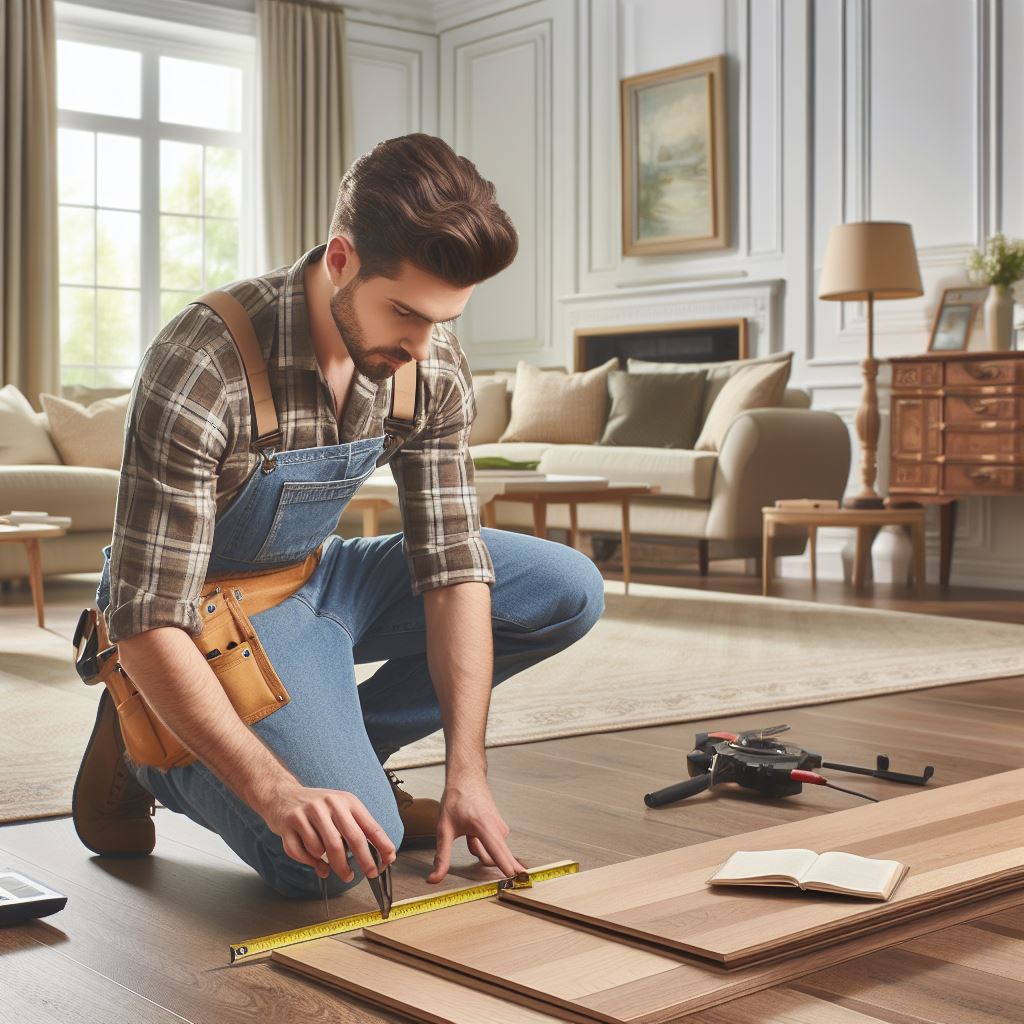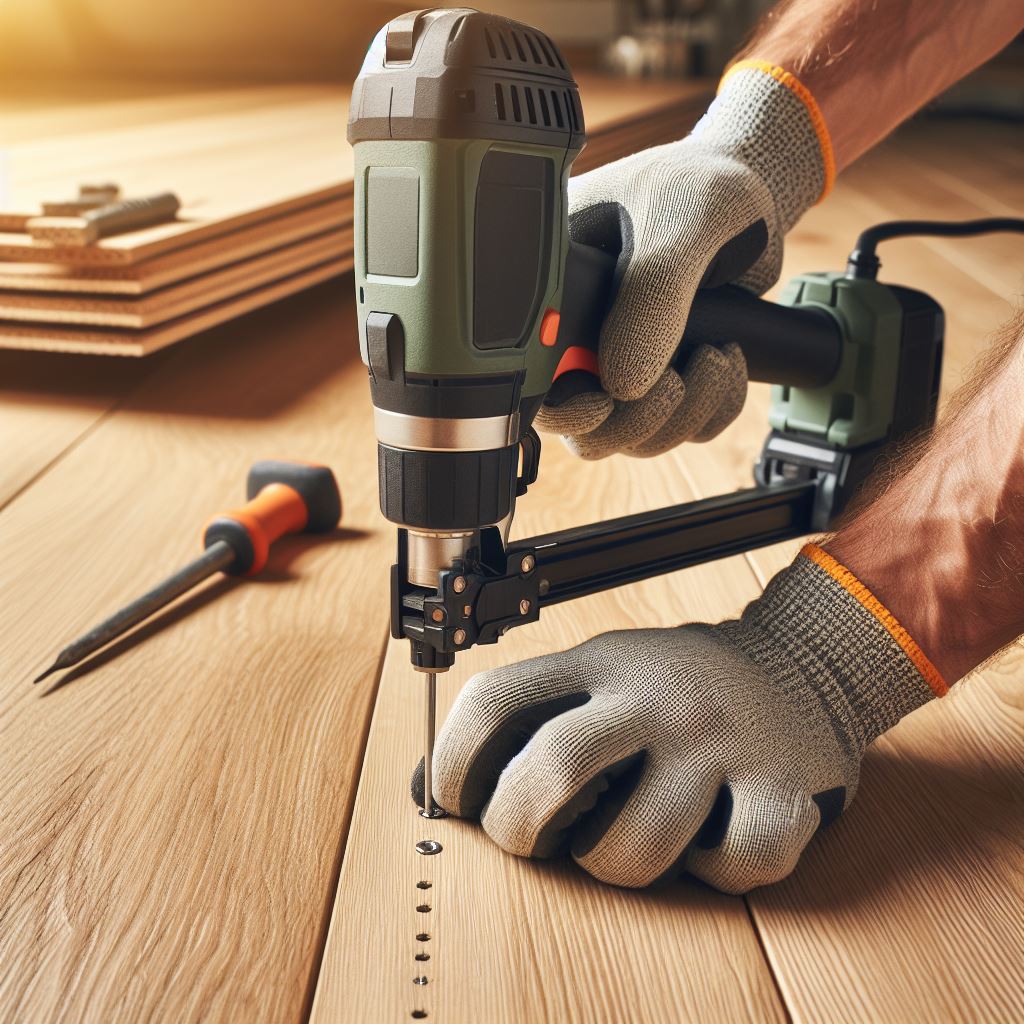Engineered wood flooring is a fantastic choice for homeowners looking to add both beauty and value to their living spaces. Unlike solid hardwood, engineered wood consists of multiple layers, including a top layer of hardwood veneer and a core that typically consists of plywood or high-density fiberboard. This construction provides enhanced stability and resistance to changes in humidity and temperature, making it a top contender for flooring in the Dallas Fortworth area. As a result, how much to lay engineered wood flooring has become a pressing question for those considering this option.
Understanding the costs involved in the installation of engineered wood flooring is crucial. It's not just about the price of the materials but also includes the labor, preparation work, and any additional materials or tools required for a successful installation. Factors such as the size of the space, the complexity of the layout, and the chosen grade of engineered wood all play into the final cost.
At Paradise Spaces, we offer expert installations that ensure the longevity and aesthetic appeal of your flooring investment. To get a clearer picture of the expenses you may encounter, request a free estimate and our team will guide you through the process with transparency and professionalism.
Understanding the Costs of Engineered Wood Flooring
The investment in engineered wood flooring can vary widely, depending on several key factors. The cost to lay engineered wood flooring is typically calculated per square foot, encompassing both the price of the flooring itself and the labor required for installation. The type of engineered wood you select can have a significant impact on the overall cost, with luxury options featuring exotic hardwoods and enhanced durability commanding higher prices.
Additional expenses that can influence the total cost include the removal of existing flooring, subfloor preparation, and the potential need for baseboards or moldings. Furthermore, the complexity of the installation can affect labor costs, with intricate patterns or the inclusion of stairs requiring more time and expertise.
It's also important to consider the long-term value that engineered wood flooring brings. While the upfront costs may be higher than some other flooring options, the durability and timeless appeal of engineered wood can enhance the resale value of your home, making it a wise investment for many homeowners.
For those in the Dallas Fortworth area seeking a balance between cost and quality, Paradise Spaces specializes in providing a range of engineered wood flooring options to suit various budgets and design preferences, ensuring that you can find the perfect match for your home without compromising on quality.
Factors Influencing the Price of Installation

When considering how much to lay engineered wood flooring, it's important to understand the various factors that can influence the overall price of installation. One of the primary considerations is the type of engineered wood chosen; higher-end selections with thicker top layers of hardwood, enhanced finishes, or exotic wood species typically cost more.
Labor rates also play a crucial role in determining the cost. These rates can fluctuate based on the installer's experience, regional wage differences, and the current demand for flooring services.
Subfloor condition is another factor that can affect price. If the existing subfloor needs repair or leveling, this will add to the total cost. Similarly, the size and layout of the installation area can impact the price, as complex cuts and patterns require additional time and precision.
The removal of old flooring and disposal fees can also contribute to the cost. If the engineered wood is being laid over an existing floor, this step may not be necessary, potentially reducing expenses.
Finally, additional materials such as underlayment, adhesives, and finishes, should be factored into the budget. These materials are essential for a successful installation and can vary in price depending on the quality and specific requirements of the project.
At Paradise Spaces, we understand these nuances and work closely with our clients to navigate the factors that influence installation costs, ensuring a transparent and tailored flooring experience.
Preparing Your Space for Engineered Wood Flooring

Proper preparation of your space is crucial for a smooth and successful installation of engineered wood flooring. To get started, clear the room of all furniture, decor, and any obstructions that may hinder the process. It's also essential to remove existing flooring, baseboards, and trim, unless the new flooring can be installed over it.
Next, assess the subfloor to ensure it is clean, dry, level, and structurally sound. Any irregularities can cause problems post-installation, such as squeaking or uneven surfaces. It may be necessary to conduct repairs or use a leveling compound on the subfloor.
It is also important to acclimatize the engineered wood to the room's environment. This process involves leaving the flooring in the space where it will be installed for a period, typically between a few days to a week, to adjust to the room's temperature and humidity levels. This step helps prevent future expansion or contraction that could lead to warping or gaps.
Take the time to plan the layout of your flooring, considering the direction of the planks and the placement of joints for the most aesthetically pleasing and structurally sound installation. Lastly, gather all the necessary tools and materials you'll need for the project, including saws, underlayment, adhesives, and fasteners, ensuring everything is at hand before beginning the installation.
At Paradise Spaces, we emphasize the importance of preparation to our clients, ensuring that when it's time to lay engineered wood flooring, the process is as efficient and effective as possible.
Installation Process for Engineered Wood Floors

The installation process for engineered wood floors is a meticulous task that requires attention to detail. Begin by laying out the underlayment, which provides a moisture barrier and sound insulation, contributing to the longevity and comfort of your flooring. Secure the underlayment according to the manufacturer's instructions, ensuring there are no gaps or overlaps.
When starting to lay the planks, choose a starting wall that is the most visible or the longest wall in the room. It's advisable to mix planks from different boxes to ensure a varied and natural look, avoiding a patchy appearance. As you lay the planks, stagger the seams by at least 6 inches from row to row, which enhances structural integrity and the floor's overall aesthetics.
Depending on the type of engineered wood flooring, you may need to either glue, nail, or click the planks together. Glue-down installations require a trowel and adhesive, while nail-down installations will need a flooring nailer. Click-lock systems, on the other hand, allow for a floating floor setup that snaps together without the need for adhesives or nails.
As you approach the opposite wall, you may need to cut planks to fit. Remember to leave an expansion gap around the perimeter of the room to allow the wood to naturally expand and contract with changes in humidity and temperature. This gap will be covered by baseboards or trim upon completion of the installation.
Finally, install transition strips at doorways and thresholds for a seamless transition to other flooring types. Once all the planks are securely in place, you can reinstall the trim and baseboards, and then move on to the finishing touches, such as applying any necessary sealant or treatment recommended by the flooring manufacturer.
Finishing Touches and Post-Installation Care

After the engineered wood planks are installed, the finishing touches are essential to ensure the beauty and durability of your flooring. Inspect the floor for any gaps or irregularities, and use wood putty that matches the color of your flooring to fill in any small holes or imperfections. Once the putty is dry, sweep and vacuum the floor thoroughly to remove all debris and dust particles.
Applying the final sealant or finish is crucial, as it will protect the wood from moisture and scratches. Follow the manufacturer’s recommendations for the type of finish suitable for your engineered wood flooring. Allow it to dry completely before moving furniture back into the room.
For post-installation care, it is recommended to place felt pads under furniture legs to prevent scratching and to use doormats at entrances to minimize the amount of dirt and grit brought onto the wood floors. Regular cleaning with a dry microfiber mop is advised, and be sure to clean up spills immediately to prevent water damage.
Remember that maintaining the right humidity levels in your home is critical to prevent warping or gapping in the flooring. Investing in a hygrometer to monitor indoor humidity can help preserve the condition of your engineered wood floors.
If you're considering engineered wood floors and wondering how much to lay engineered wood flooring, Paradise Spaces is here to assist. Our expertise in hardwood and luxury vinyl floors ensures a flawless installation and finish. Don't hesitate to Request a free estimate or email us at sales@paradise-spaces.com for personalized service and guidance through your flooring journey.
